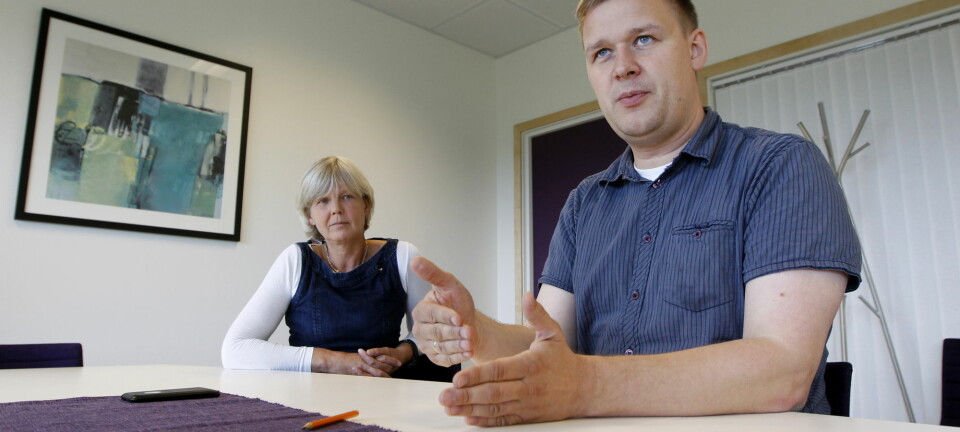
What if psychological disorders don’t have any underlying cause?
Traditionally, both researchers and practicing psychologists have searched for the root cause of mental disorders: The trauma. The genes. The biochemistry that causes symptoms of anxiety or depression. But what if the symptoms are the actual disease?
“In the prevailing understanding of mental disorders, the premise is that an underlying cause exists,” says Sverre Urnes Johnson, associate professor at UiO’s Department of Psychology and a senior researcher and psychology specialist at the Modum Bad Psychiatric Center.
The idea is that symptoms like sadness, insomnia, social isolation and constant brooding are just different manifestations of a hidden root cause.
The symptoms aren’t the real problem, in other words. The actual problem can be found in a person’s genes, biochemical disruptions or unconscious internal conflicts.
Or, are the symptoms the disorder?
The prevailing principle above has been taken from medicine, says Johnson.
An example is when an underlying bacterial infection gives you a fever and sore throat. Even if you take painkillers and fever-reducing medication, it doesn’t address the real cause of the problem.
“But this approach doesn’t make sense in psychology. Here, the symptoms have value in themselves. They are the patient's experienced problems, and we know that these problems affect each other. One problem – or symptom, as it’s called in the medical model – can trigger or reinforce another,” Johnson says.
"Focusing on finding underlying causes can come at the expense of the chance to help someone," says Johnson.
He and colleague Asle Hoffart believe it is time to change our understanding of mental disorders.
“We contend that the symptoms constitute the disorder itself,” they say.
Network of symptoms
Johnson and Hoffart believe we should regard mental disorders as a network of symptoms that affect each other and form vicious circles.
For example, worry and rumination can lead to major sleep problems that in turn cause fatigue and social isolation – and a lot of alone time to worry and brood.
If you first and foremost see these symptoms as the problem, the natural treatment will be to address the symptoms – starting with the most troublesome ones.
What is the patient trying to achieve by brooding? Is It possible to reduce the rumination and worrying?
If the patient succeeds in reducing their ruminating, this could influence the other problems. More sleep could allow for more social contact and less fatigue.
"If we focus too much on underlying causes, we may miss opportunities to make progress," says Johnson.
He and Hoffart have now initiated a number of research projects at the University of Oslo and Modum Bad to study mental disorders from a network perspective.
Not tested
Johnson emphasizes that the network perspective does not trivialize either genetics or traumatic life events.
A lot of research shows that vulnerability to mental disorders is hereditary. And specific psychological or biological events may trigger the problems. But, Johnson believes, that's not necessarily where we find the solutions to the issues.
To resolve the disorders, it could be equally useful to address the symptoms.
However, it will take some time before anyone can say whether this new understanding of mental disorders improves on the old one.
Currently, network understanding is a theoretical model. Johnson and his colleagues have done statistical studies on the relationships between different symptoms and have written several scientific articles on the model. They also use it as a tool in their meetings with patients.
However, no studies have compared treatment based on this model to treatment based on the idea of underlying causes.
Exciting idea
Jan Ivar Røssberg, a professor and consultant in psychiatry at the University of Oslo, has not been involved in working on the theories of a network understanding of mental disorders.
However, he does not find the idea controversial.
He says this is actually a model that was developed in the 1980s. “But now science has gained the statistical power to investigate how symptoms are interrelated and affect each other,” says Røssberg.
“The idea is exciting and has a lot going for it. But I’m taking more of a wait-and-see attitude in terms of how it could affect patient treatment,” he says.
“This is a new model that we have to test to see how it works in practice.”
Human nature to look for causes
Røssberg believes that most professionals who treat patients already take their symptoms into account.
“The patients don’t come in and say they’re having a problem with their DNA. They may be sad or they hear voices in their heads. And then we ask: What’s perpetuating this? How can we make it better? And it's very individual,” he says.
However, the professor doesn’t anticipate that patients or therapists will reject the idea of underlying causes right away.
“We’ll still look for them. It’s human nature to try and figure out the root causes of things,” he says.
Røssberg believes it may also be important for patients to find an explanation.
“Even if the explanation isn’t correct, it can help make sense of the situation. Then we can move on and consider what is perpetuating the problems and what we can do about them,” he says.
Translated by: Ingrid P. Nuse
References:
S.U. Johnson & A. Hoffart, Metacognitive therapy versus Cognitive behavioral therapy: A network approach, Frontiers in Psychology, November 2018. Abstract.
S. U. Johnson, M. Johnson, P. Sele & A. Hoffart, Kompleks post-traumatisk stresslidelse: fra latent konstrukt til nettverksforståelse [Complex post-traumatic stress disorder: from latent construct to network understanding], Tidsskrift for Norsk Psykologforening, June 2019.
A. Hoffart, T. F. Langkaas, T. Øktedalen & S. U. Johnson, The temporal dynamics of symptoms during exposure therapies of PTSD: a network approach, European Journal of Psychotraumatology, June 2019.
———
Read the Norwegian version of this article at forskning.no
































